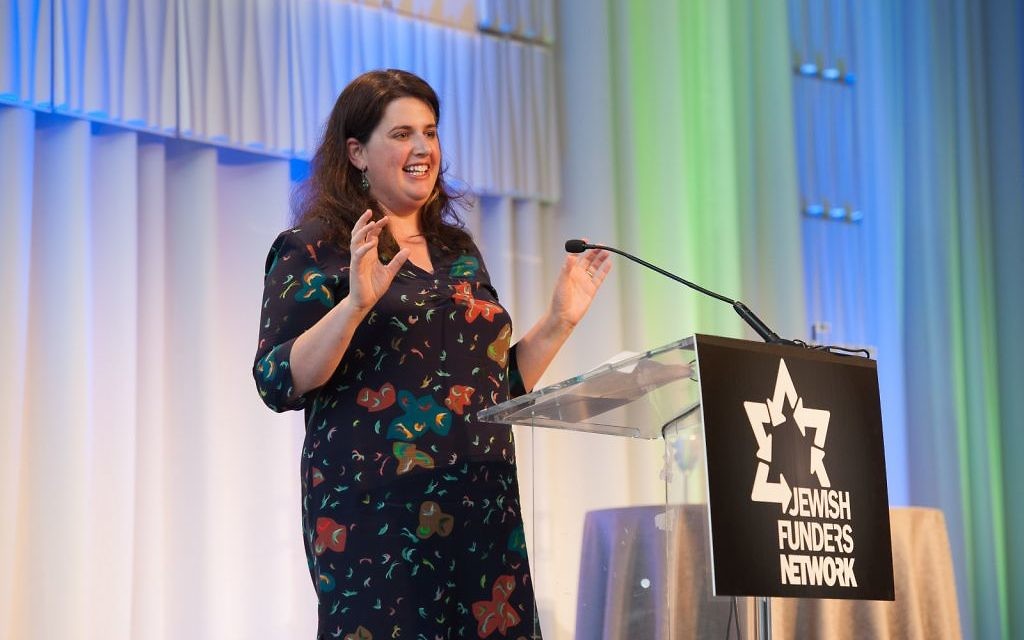Innovation Can Design Better Philanthropy
Judaism like design is constantly evolving to accommodate new models

The Jewish community is evolving, but an open mind and new philanthropic endeavors can steer it in a positive direction, according to the closing plenary of the Jewish Funders Network conference March 21.
Sefaria Executive Director Daniel Septimus, IDEO Chief Creative Officer Paul Bennett and International Refugee Assistance Project Director Becca Heller spoke, and violinist Niv Ashkenazi presented a special performance.

Septimus spoke about beginnings and endings within the Jewish faith and touched on the diversity of the conference participants and what each had learned.
Get The AJT Newsletter by email and never miss our top stories Free Sign Up
“We don’t do endings as Jews. This is true both literary and culturally,” Septimus said. “Our conversations start with Torah and end with the last commandment, which is to write a new Torah … because it’s more than a ritual act — it’s accessible. It is your own learning, own experiences and struggles. … Everyone’s voice is different, and we are excited to see all the things you will do.”
Heller, a former recipient of the Charles Bronfman Prize, shared her story about starting an organization to help refugees and expressed her appreciation for philanthropists who mobilized and helped refugees enter the United States despite President Donald Trump’s efforts to institute a four-month ban on the admission of refugees during a review of vetting procedures.
Bennett spoke about his experiences with the Jewish community and his efforts to design new ways to keep the culture, tradition and religion alive.
“Before you design, you need to think about who people are,” Bennett said. To help identify issues in everyday Jewish life, he stressed the importance of concepts related to design and funding as well as Judaism.
Design issues within religion and culture tend to repeat themselves in the Jewish community, Bennett said, yet they also raise opportunities to create better relationships between designers and funders.
“It’s not rocket science. It’s not calculus or string theory. It’s simple. … What works best for funding and any kind of relationship is that you have to get people to feel it,” Bennett said. “We are so bombarded with information today that we rarely feel anything, so how do we get people to feel it on their skin?”
Jewish aspects of activism may offer a solution. Bennett spoke of the need to embrace conversations rather than argue over who is more Jewish and to create platforms that focus on family, tradition and ritual.
“Inclusion makes a difference, and it is up to us to consider whether we wish to dial it up or down to support Jewish culture,” he said.
Bennett concluded by proposing questions to the next generation of Jewish philanthropists. “Are we remembering what it feels like to be out there, to be young, to be this religion or that religion? Are we remembering to bring everyone to the conversation and to keep humans in the center? Judaism and design are the same thing. They are constantly evolving, and we need to understand how to appeal to people’s hearts and minds. We also need to use books in order to deeply honor the past and to look forward to the future.”





comments